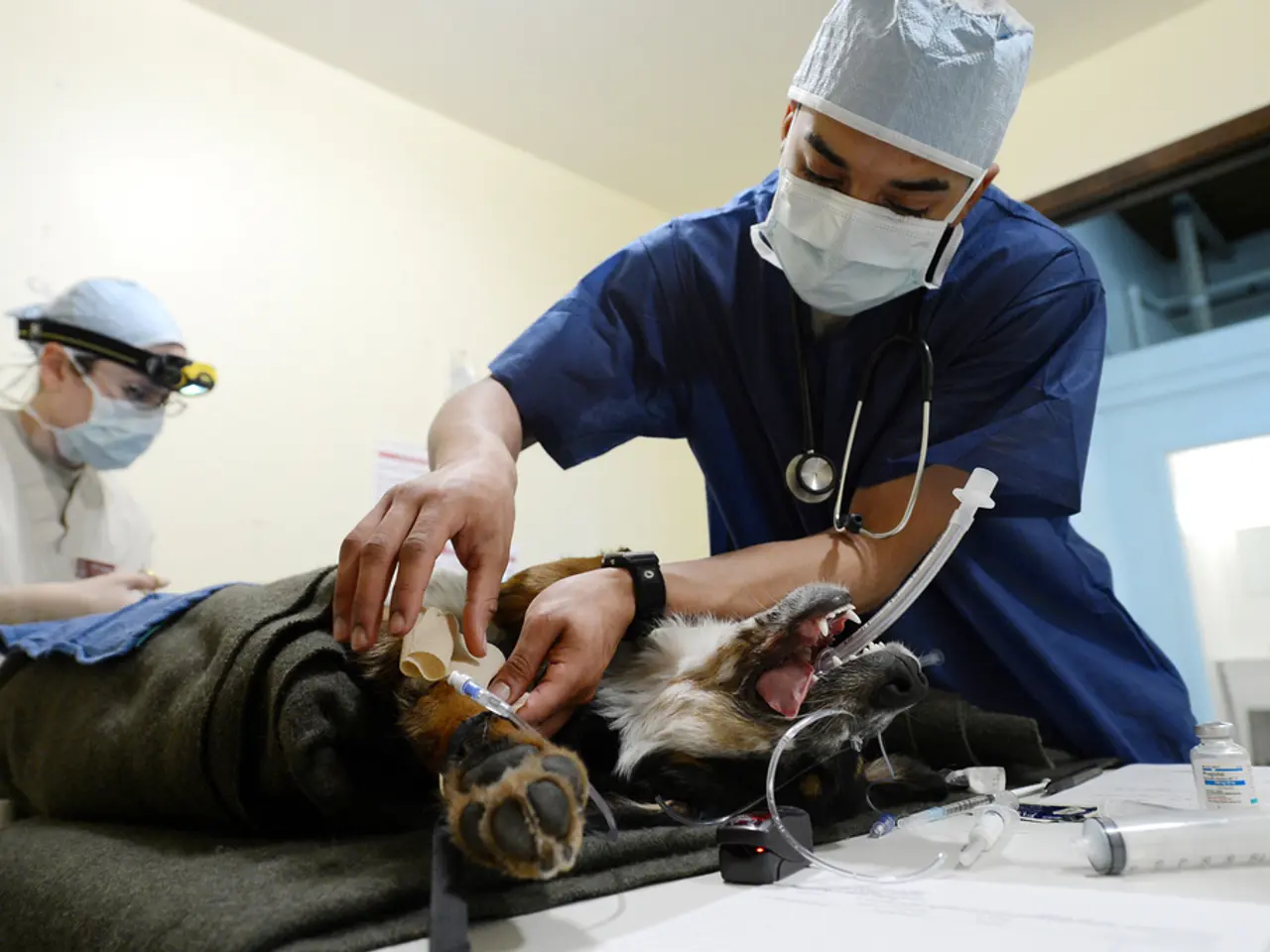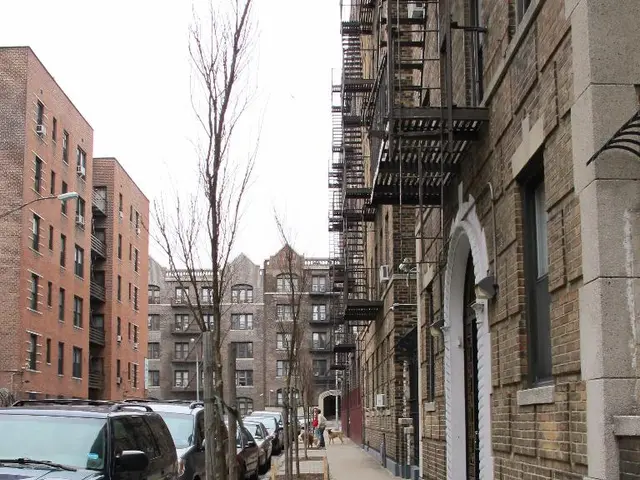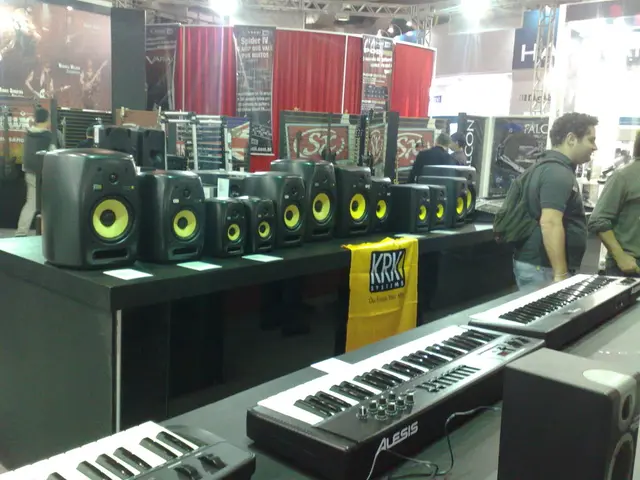Considerations before Purchasing a CPAP Cleaner
In the world of sleep apnea treatment, CPAP (Continuous Positive Airway Pressure) machines play a crucial role in improving breathing during sleep. However, these devices require regular and thorough cleaning to prevent the growth of bacteria, fungi, and viruses that can cause serious illnesses [1].
CPAP machines consist of several parts, including the CPAP unit, humidifier, mask or nasal pillows, tubing, and headgear. The FDA recommends cleaning these parts by hand using mild soap and water, following the manufacturer's instructions [2]. Regular cleaning schedules are essential, with daily cleaning for nose pillows and weekly cleaning for tubing and humidifier chambers.
It's also important to use distilled water in the humidifier to limit mineral buildup and to avoid using strong detergents, bleach, alcohol-based cleansers, and antibacterial cleansers, as advised by the American Sleep Apnea Association [3]. Vinegar diluted with water can be used to reduce odors.
However, there are concerns regarding automatic CPAP cleaners, particularly those using ozone or ultraviolet (UV) light. The FDA warns against these devices due to potential health risks from exposure to harmful gases released by such products, which may increase the chance of respiratory infections [1][3].
Potential risks with automatic CPAP cleaners include exposure to high levels of harmful gases or residues that can cause respiratory infections, risks associated with cleaning methods that may degrade materials or leave residues harmful when inhaled, and specific warnings from the FDA against ozone and UV light devices as they can leave harmful residues or cause damage [1][5].
Tests have revealed that devices using ozone generate unsafe levels of ozone gas [4]. Furthermore, CPAP cleaners using UV light might not consistently provide enough UV light to disinfect a CPAP machine [5].
The American Thoracic Society recommends daily emptying of the humidifier, daily wiping of the mask or nasal pillows, and weekly cleaning of the CPAP device, humidifier chamber, tubing, mask or nasal pillows, headgear, and filter [6]. Other experts recommend daily washing of the mask, water chamber, and tubing, and soaking the water chamber in soapy water for 10 minutes every day [7].
Disposable filters should be replaced monthly, and it's essential to follow the manufacturer's guidelines for cleaning and maintaining your CPAP machine [2].
OSA (Obstructive Sleep Apnea) is a condition that increases the risk of chronic health conditions and is manageable through treatment with a CPAP machine. However, the use of automatic CPAP cleaners, particularly those using ozone, is associated with significant concerns about safety and effectiveness.
Using an ozone-based CPAP cleaner may lead to breathlessness, headaches, asthma attacks, coughing, and nasal irritation [8]. Therefore, it is best to stick to manual cleaning with mild soap and water and following manufacturer guidance.
In summary, manual cleaning with mild soap and water and following manufacturer guidance is safest, while automatic cleaners, especially ozone or UV-based, are discouraged by the FDA due to reported health risks.
[1] Food and Drug Administration. (2020). Cleaning, disinfection, and sterilization of reusable medical devices. Retrieved from https://www.fda.gov/medical-devices/reprocess-single-use-devices/cleaning-disinfection-and-sterilization-reusable-medical-devices
[2] American Sleep Apnea Association. (2021). Cleaning and maintaining your CPAP device. Retrieved from https://www.sleepapnea.org/resources/treatment/cpap/cleaning-and-maintaining-your-cpap-device/
[3] Food and Drug Administration. (2019). FDA warns about potential risks with automatic CPAP cleaners. Retrieved from https://www.fda.gov/news-events/press-announcements/fda-warns-about-potential-risks-automatic-cpap-cleaners
[4] Food and Drug Administration. (2018). FDA warns about potential risks with automatic CPAP cleaners that use ozone. Retrieved from https://www.fda.gov/news-events/press-announcements/fda-warns-about-potential-risks-automatic-cpap-cleaners-that-use-ozone
[5] American Thoracic Society. (2014). Infectious diseases in sleep-disordered breathing. Retrieved from https://www.atsjournals.org/doi/10.1513/annalsats.201403-068oc
[6] American Thoracic Society. (2014). Infectious diseases in sleep-disordered breathing. Retrieved from https://www.atsjournals.org/doi/10.1513/annalsats.201403-068oc
[7] National Sleep Foundation. (2020). How to clean and care for your CPAP equipment. Retrieved from https://www.sleepfoundation.org/cpap-apap-bipap/content/how-clean-and-care-your-cpap-equipment
[8] Food and Drug Administration. (2018). FDA warns about potential risks with automatic CPAP cleaners that use ozone. Retrieved from https://www.fda.gov/news-events/press-announcements/fda-warns-about-potential-risks-automatic-cpap-cleaners-that-use-ozone
- To maintain CPAP machines, hand washing with mild soap and water is advised, as per FDA instructions.
- Manual cleaning is considered safer compared to automatic cleaners, particularly those utilizing ozone or UV light.
- In the world of household supplies, distilled water is recommended for use in CPAP humidifiers.
- Strong detergents, bleach, alcohol-based cleansers, and antibacterial cleansers should be avoided when cleaning CPAP parts.
- Vinegar diluted with water can aid in reducing odors in CPAP devices.
- Ozone-based CPAP cleaners can produce unsafe levels of ozone gas.
- UV light CPAP cleaners might not consistently disinfect a CPAP machine.
- The FDA has issued warnings about potential health risks from exposure to harmful gases released by automatic CPAP cleaners.
- High levels of harmful gases or residues from certain cleaners can increase the risk of respiratory infections.
- Cleaning methods that degrade materials or leave harmful residues should be avoided when cleaning CPAP parts.
- The FDA specifically warns against ozone and UV light devices due to their potential to leave harmful residues or cause damage.
- OSA (Obstructive Sleep Apnea) is associated with an increased risk of chronic health conditions.
- CPAP machines consist of various parts, such as the CPAP unit, humidifier, mask, tubing, and headgear.
- Daily emptying of the humidifier, wiping of the mask or nasal pillows, and weekly cleaning of the CPAP device are recommended by the American Thoracic Society.
- Other experts suggest daily washing of the mask, water chamber, and tubing, as well as soaking the water chamber in soapy water for 10 minutes daily.
- Disposable filters should be replaced monthly, and it's essential to follow the manufacturer's guidelines for cleaning and maintaining your CPAP machine.
- Using an ozone-based CPAP cleaner may lead to breathlessness, asthma attacks, coughing, and nasal irritation.
- CPAP cleaners using UV light might not consistently provide enough UV light to disinfect a CPAP machine.
- In general news, the FDA has issued several warnings regarding potential risks with automatic CPAP cleaners.
- In the realm of mental health, stress and lack of sleep due to sleep apnea can impact overall well-being.
- Poor sleep quality can also affect personal growth and development.
- In social media, sharing experiences and seeking advice about sleep apnea treatment can provide support and promote awareness.
- Career development may be hindered by sleep apnea if it results in chronic absenteeism or reduced productivity.
- People with sleep apnea can explore online courses in health and wellness to learn more about managing their condition.
- Casino-and-gambling, entertainment, and sports are examples of activities that can be enjoyed during periods of improved sleep quality.
- Shopping for household supplies can include purchasing items like CPAP supplies and mask liners.
- Personal finance and financial planning can help individuals manage health-related expenses associated with CPAP treatment.
- Learning about skills training in data and cloud computing can open up opportunities for career advancement in the technology sector.
- In the world of sports, athletes with sleep apnea may experience improved performance after receiving treatment with a CPAP machine.




